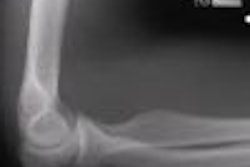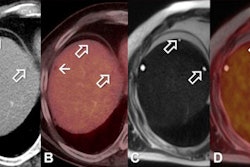PET imaging with a tracer for the signal receptor neurokinin 1 (NK1) could be useful for investigating the physiological processes of soft-tissue pain.
The findings from researchers at Uppsala University in Sweden were published online October 14 in PLOS One.
In the study, 10 people with chronic tennis elbow were examined by PET with the NK1-specific radioligand carbon-11 GR205171 before and after treatment with graded exercise. The tracer binds to available NK1 receptors, which can then be visualized using PET.
The study is the first time upregulation of these receptors has been visualized by diagnostic imaging in painful tissue in humans, according to lead researcher Dr. Magnus Peterson. The PET results showed elevated levels of NK1 in the painful area compared with the healthy arm.
In the future, Peterson and colleagues hope to develop less expensive markers that will allow the method to be used in everyday clinical practice, and they also hope to create markers for other physiological processes that are active in chronic soft-tissue pain.



















